Biblical Definition of Honesty
Defining honesty in a society where dishonesty is rewarded is not an easy task. Dictionary.com, defines honesty as being “free of deceit and untruthfulness, sincere.” Deceitful people practice the concealment or distortion of the truth. They do it to be misleading; for duplicity; fraud or even cheating. Honesty and truth are bound together, linking honesty to the source of a person’s truth. The Bible links honesty to a person’s mind, character, and their behavior when dealing with others.
Biblical honesty is visible through a person’s actions and words. Being a Christian is about providing a mirror of God’s own nature. God requires all Christians to be honest. Honesty begins with and is integral to the Gospel’s message. To be honest is to be to be correct, fair. As followers of Jesus, we must know God’s Truth. Knowing the Truth enables one to continue to fight off falsehoods. If you pursue God’s Truth for your doctrines and beliefs, you will protect yourself from Satan’s deception:
(Ephesians 4:11–15)1NIV New International Version Translations – “So Christ himself gave the apostles, the prophets, the evangelists, the pastors and teachers, to equip his people for works of service, so that the body of Christ may be built up until we all reach unity in the faith and in the knowledge of the Son of God and become mature, attaining to the whole measure of the fullness of Christ. Then we will no longer be infants, tossed back and forth by the waves, and blown here and there by every wind of teaching and by the cunning and craftiness of people in their deceitful scheming. Instead, speaking the truth in love, we will grow to become in every respect the mature body of him who is the head, that is, Christ.”
A life of honesty requires being honest with others, but also being honest with ourselves. Our own sinful nature and the world are full of deceit. If we are not careful, sin can begin to look good to us and we can forget that the only source of genuine Truth is God.
(James 1:14–17) – “but each person is tempted when they are dragged away by their own evil desire and enticed. Then, after desire has conceived, it gives birth to sin; and sin, when it is full-grown, gives birth to death. Don’t be deceived, my dear brothers and sisters. Every good and perfect gift is from above, coming down from the Father of the heavenly lights, who does not change like shifting shadows.”
One way to keep ourselves honest is to continue to read and study the Word of God. The Bible is a primary way that God reveals Himself to us. The more we know Him and His Truth, the more we will live honest lives. Another key part of honesty is the Christian community itself. People committed to following Jesus can encourage one another. This helps others keep the faith and to live as Jesus has called them to live. The world may not applaud honesty, but people in Christ can remind us that the way of Christ is the way of true life. Community also helps with accountability.
(Hebrews 3:13) – “But encourage one another daily, as long as it is called “Today,” so that none of you may be hardened by sin’s deceitfulness.”
We are often unable to see the true situation of our own hearts (Jeremiah 17:9). When there are people in our lives who are willing to be honest with us about everything, even those things that are difficult to hear, it is easier to deal with our own shortcomings. The same is true if we are willing to be honest with others, even when the truth seems uncomfortable. Together, as a body of Christ, we can grow in faith, love, and honesty. Honest words spoken with gentleness, respect, and love make a difference.
(1 Peter 3:15) – “But in your hearts revere Christ as Lord. Always be prepared to give an answer to everyone who asks you to give the reason for the hope that you have. But do this with gentleness and respect,”
Example of Biblical Honesty
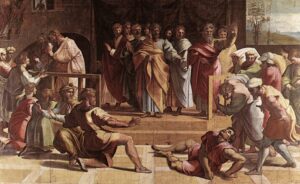 One of the most significant stories in the Bible about honesty or the lack there of is about Ananias and Sapphira. They were a married couple who sold their land and gave the proceeds to the disciples, only they did not give all the money. They lied, telling Peter that it was all the money when in fact they had saved some back for themselves. When Peter confronted them, they died. While sudden death seems like a very harsh punishment for lying, it shows us how much God hates dishonesty.
One of the most significant stories in the Bible about honesty or the lack there of is about Ananias and Sapphira. They were a married couple who sold their land and gave the proceeds to the disciples, only they did not give all the money. They lied, telling Peter that it was all the money when in fact they had saved some back for themselves. When Peter confronted them, they died. While sudden death seems like a very harsh punishment for lying, it shows us how much God hates dishonesty.
(Acts 5:1-11) – “Now a man named Ananias, together with his wife Sapphira, also sold a piece of property. With his wife’s full knowledge he kept back part of the money for himself, but brought the rest and put it at the apostles’ feet. Then Peter said, “Ananias, how is it that Satan has so filled your heart that you have lied to the Holy Spirit and have kept for yourself some of the money you received for the land? Didn’t it belong to you before it was sold? And after it was sold, wasn’t the money at your disposal? What made you think of doing such a thing? You have not lied just to human beings but to God.” When Ananias heard this, he fell down and died. And great fear seized all who heard what had happened. Then some young men came forward, wrapped up his body, and carried him out and buried him. About three hours later his wife came in, not knowing what had happened. Peter asked her, “Tell me, is this the price you and Ananias got for the land?” “Yes,” she said, “that is the price.” Peter said to her, “How could you conspire to test the Spirit of the Lord? Listen! The feet of the men who buried your husband are at the door, and they will carry you out also.” At that moment she fell down at his feet and died. Then the young men came in and, finding her dead, carried her out and buried her beside her husband. Great fear seized the whole church and all who heard about these events.”
The deaths of Ananias and Sapphira are frightful and puzzling. This married couple sell a piece of their own property and publicly give the proceeds to the community. But they secretly hold back a portion of the money for themselves. Peter detects the deception and confronts the two separately. Merely hearing Peter’s accusation causes each of them to fall dead on the spot. To our ears, their fate seems out of proportion to their infraction. Peter acknowledges that they were under no obligation to donate the money: “Didn’t it belong to you before it was sold? And after it was sold, wasn’t the money at your disposal? What made you think of doing such a thing? You have not lied just to human beings but to God.” (Acts 5:4). Private property had not been abolished, and even those in the community of Christians could legitimately choose to hold the resources God has entrusted to them. So why does lying in this case about the money bring about instant death?
It is too simple to explain their deaths as simply sin. It appears that Ananias and Sapphira’s transgression is they are fake Christian community members. By lying to achieve an honor they did not earn, Ananias and Sapphira dishonored and shamed themselves. They also revealed themselves to really be outsiders, imposters. Their deceit demonstrated that they were still functioning as members of the Roman system. The couple had pretended to have become members of the Christian community. They attempt to look like Barnabas in his approach to stewarding resources (Acts 4:36-37). But the couple’s motivation was to gain honor for themselves.
They looked generous, but they were giving for the sake of status, not love. Moreover, their lie about their stewardship of resources was interpreted by Peter as a lie directly to the Holy Spirit and to God (Acts 5:3-4). Their false generosity and their attempt to deceive the Holy Spirit was a threat to the identity of their Christian community. This comes to us as a sober reminder of the seriousness connected with our own Christian community and to our own participation within it.
What if deceit occurred in the realm of the church’s work itself? What if someone had falsely pretended to serve as though they were serving God (Colossians 3:22-24), or treat subordinates unjustly (Colossians 3:25)? Would deceiving the Christian community about such things have caused a similarly unacceptable threat to the community? Genuinely belonging to a Christian community should carry with it a fundamental change in our orientation to the group. We should act honestly in all ways, including work. Our purpose should be to love our neighbors as ourselves, not to increase our social status, wealth, and power.
Ideas to Explore
From our definition, it appears that there are several aspects to honesty. These include being morally correct in our words, actions, and thoughts. It would be worthy of a group discussion to ask about the following:
- What are some examples of being morally correct in our words? An example of being morally correct in words may include being honest and never putting others down.
- What are some examples of being morally correct in our actions? An example of being morally correct in actions includes dealing with resumes or taxes honestly.
- What are some examples of being morally correct in our thoughts? An example of being morally correct in our thoughts includes resisting the temptation to dwell on a sexual fantasy with an attractive girl or boy we may see.
- What is the hardest to control or has the most difficulty in maintaining moral correction? Thoughts are typically the hardest to control. How do you control your thoughts?
- Why is it so difficult to control our thoughts? Read Psalm 51:5 for the biblical answer. Our thoughts are the easiest to hide from others. As the result of being born sinful, people are naturally judgmental and selfish. As Christians, our call is to turn away from our sinful tendencies.
- What is the difference between being judgmental and making a judgement?
- Why are we sinful at birth? Read Romans 5:12-21 for the biblical answer: Through Adam and Eve’s disobedience to God, all people have been cursed by sin. As the result of generational sin, we have the tendency to be dishonest.
- In what life events is it the most difficult to be honest?
- When we know that we have messed up and know that the truth will result in a major consequence.
- When we are sure that we can get away with what we did wrong.
- When we believe that we are protecting someone as the result of not telling the truth.
A Departure
 For this virtue, we are going to use stories where the decisions made by people had elements of fraud in them. Yes, in our stories, there were good outcomes. There was also a little trickery. The problem many people face today is that life’s decisions are not always black and white. Many are gray. Honesty should be truthfulness. This lesson will touch on the concept of truth from a human perspective as well as from God’s perspective. God’s Truth often offends people. The gospel’s message is one that asks people to change, and that can be hard to do. Others might take offense at their need for a “Savior,” someone to be subservient to bow to. In fact, Jesus pretty much promises that people will be angry at His message:
For this virtue, we are going to use stories where the decisions made by people had elements of fraud in them. Yes, in our stories, there were good outcomes. There was also a little trickery. The problem many people face today is that life’s decisions are not always black and white. Many are gray. Honesty should be truthfulness. This lesson will touch on the concept of truth from a human perspective as well as from God’s perspective. God’s Truth often offends people. The gospel’s message is one that asks people to change, and that can be hard to do. Others might take offense at their need for a “Savior,” someone to be subservient to bow to. In fact, Jesus pretty much promises that people will be angry at His message:
(Luke 21:12-19) – “But before all this, they will seize you and persecute you. They will hand you over to synagogues and put you in prison, and you will be brought before kings and governors, and all on account of my name. And so you will bear testimony to me. But make up your mind not to worry beforehand how you will defend yourselves. For I will give you words and wisdom that none of your adversaries will be able to resist or contradict. You will be betrayed even by parents, brothers and sisters, relatives and friends, and they will put some of you to death. Everyone will hate you because of me. But not a hair of your head will perish. Stand firm, and you will win life.”
“What is truth?” asks Pilate when Jesus stood at His trial before him. A good question even today since we live in a world in which absolute truth does not exist. Pilate was dismissive, angry that Jesus dared to speak with Truth. Yet, there was Pilate looking into the face of the Incarnate Truth but could not discern it. Truth is reality. It is how things are. Truth is consistent with the mind, will, character, glory, and being of God. Truth is the self-disclosure of God Himself. All Truth is defined by God, whose very nature is Truth. Truth is divine, from above, not of this world. Truth is not determined by opinion polls, public surveys. It does not come from human knowledge. Truth is found only by divine revelation.
God’s Truth is absolute because God is absolute. Human truth is subjective, relative, and pragmatic. It gives way to personal or cultural preferences. The issue today is whether there is absolute truth that is true for everyone? This would be a truth for no matter who they are, where they live, or what they do. Society defines truth as whatever they want it to be. Something cannot be both true and not true. In such a worldview of self-deception, truth is no longer a goal. All truth must be true! The Truth we seek must be absolute because it comes from the one and only God.
Since God does not change, neither does His Truth. What is true today for God is true tomorrow. Truth is the same yesterday, today, and forever. Right is always right and wrong is wrong. Wrong is forever wrong! Society may try to redefine morality. But Jesus called Himself the Truth, not the custom of the day. The world changes but God’s Truth remains unchanging.
Example of Historical Honesty
For our American Revolution story about honesty, we are going to look to Paul Revere. Revere became involved as an active member of the Boston’s Sons of Liberty chapter right from its inception. Revere was a talented silversmith. He used proceeds from his trade to finance revolutionary activities. One of his most publicized and effective activities used his engraving skills. This is where his trade and his political views came together. To print pictures during the times before photography, a plate was engraved for a printing press. Paul Revere is famous for his representation of the Boston Massacre.
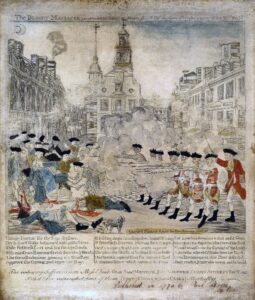 By the beginning of 1770, there were 4,000 British soldiers in Boston, a city with 15,000 inhabitants. Stating this another way, one out of every four people were an armed British soldier. This was a tense time in the city. On the evening of March 5, a crowd of day laborers, apprentices, and merchant sailors began to throw snowballs, icicles, and rocks at British soldiers near the Custom House. A shot rang out, and then several soldiers fired their weapons. Five civilians lay dead or dying, including Crispus Attucks, an African American merchant sailor who had escaped from slavery twenty years earlier.
By the beginning of 1770, there were 4,000 British soldiers in Boston, a city with 15,000 inhabitants. Stating this another way, one out of every four people were an armed British soldier. This was a tense time in the city. On the evening of March 5, a crowd of day laborers, apprentices, and merchant sailors began to throw snowballs, icicles, and rocks at British soldiers near the Custom House. A shot rang out, and then several soldiers fired their weapons. Five civilians lay dead or dying, including Crispus Attucks, an African American merchant sailor who had escaped from slavery twenty years earlier.
Paul Revere’s historic engraving was produced three weeks after the Boston Massacre. Entitled, “The Bloody Massacre in King-Street,” it was the most effective piece of war propaganda in American history. Yet, it was not an accurate depiction of the actual event. The engraving shows a neat row of soldiers firing in a volley on command into an orderly group of townsmen. Later evidence indicated that no officer gave an order to fire. Before any shots were fired, at least one soldier had been attacked by a man with a club. The engraving also includes a window embellishment and a poem that Revere likely wrote. Revere based his engraving on that of the artist, Henry Pelham, who created the first illustration of the event. Pelham was neither paid nor credited for his work. Revere stole it.
The embellishment of a window in the engraving is interesting. In 1770, British merchandise was of higher quality. To protest taxation by King George III, local merchants had been operating under a voluntary agreement to only sell colonial goods. Frustrated by several years of struggling to make any profit, the merchants announced they would resume selling British goods. Theophilus Lillie, a dry goods merchant, was one of the first to break the non-importation agreements. Though some merchants disregarded the ban altogether, most did it quietly. Lillie, though not political, did so with a flourish, announcing his intentions in a letter to the Boston Chronicle.
His decision led to dueling letters and articles in the newspapers, and, on the night of February 22, 1770, a protest formed in front of his house. Soon their protest turned violent. Ebenezer Richardson, a British customs officer, stepped in and tried to stop the demonstration. He urged several passing men to tear down the sign and effigies in front of Lillis’ house. The passersby declined to help, and the protesters drove back Richardson and pelted him with dirt and stones as he fled. But the crowd pursued Richardson to his house. Richardson went to a window and first fired his musket without shot to disperse the crowd. He returned to the window to shoot again. This time his gun loaded with “swan shot,” pea-sized lead balls.
The second shot injured teenager Samuel Gore. The second shot also killed 11-year-old Christopher Seider, one lead ball striking him in the chest. This made Christopher Seider the first casualty in the American Revolution. The news quickly spread through the city. Newspapers halted their presses to include accounts of the shooting. Days later, they would report more than 1,000 people attended Seider’s funeral.
In the engraving, Revere shows a rifle pointed from a window, firing at the crowd. People knew his reference. By adding an event not part of the Boston Massacre and then misrepresenting the actual shooting of colonists near the Custom House, Paul Revere was able to maximize the anger brewing in the colonies. His engraving could be called one of the first examples of “fake news.” Most was true but embellished to maximize a political point.
Afterwards, John Adams, a future Founding Father, received a request to play the role of legal counsel for the British soldiers. Despite his own independent views, Adams accepted the case and acted with great integrity to fulfill his duty to the law. Although he understood the reasons for the colonial subjects to be angry, he argued that the mob had threatened the British soldiers forcing them to defend their own lives. Six of the soldiers were acquitted while the other two were found guilty of manslaughter and sentenced to a branding on the hand. The light sentence for two was a legal trick employed by John Adams. The convicted soldiers were granted a Benefit of the Clergy. The only definition of “clergyman” was an ability to read from the Bible. This was John Adams’ defense and can be found here.
Paul Revere was a Patriot and hero in our American Revolution. Many times, he risked his life for this belief in the American dream. The question is whether the honesty that informed “a soon to be nation” was tainted by the embellishments added by Revere? We are free people today because a picture and a poem. Was Paul Revere a dishonest person? How does God view Revere’s actions?
Ideas to Explore
With fake news as a contemporary topic, consider selecting several publications and cable television shows. Choose a selection that is known for both their honest appraisal of the news and for their personal embellishment of their own bias. Collect the headlines over a week or two. Meet, and review them to identify the elements of honesty as well as deceit.
Discuss whether the areas of misinformation can have a greater purpose that is in concert with God’s Truth and the overall betterment of the Christian church. Then discuss how as people in the world, one can keep themselves grounded in the Truth, God’s Truth.
Examples of Historical Honesty Occurring in Florida
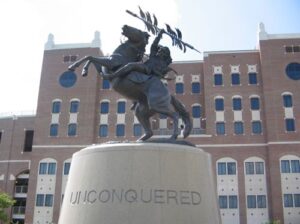 Osceola is the most well-known leader of the Seminole Indians. You would know him as the statute in front of the Florida State University football stadium. Osceola was born in 1804, in a Creek Indian town near Tallahassee. Today, it is Tuskegee, Alabama. His Creek mother, Polly Copinger, was married to an Englishman William Powell. Throughout his youth, Osceola was known as Billy Powell.
Osceola is the most well-known leader of the Seminole Indians. You would know him as the statute in front of the Florida State University football stadium. Osceola was born in 1804, in a Creek Indian town near Tallahassee. Today, it is Tuskegee, Alabama. His Creek mother, Polly Copinger, was married to an Englishman William Powell. Throughout his youth, Osceola was known as Billy Powell.
In 1813, armed conflict broke out among various Creek tribes in Alabama, and then expanded to disputes between whites and Creeks. These Creek Wars influenced the move of Osceola’s tribe further south, into an area between the St. Marks and Suwannee rivers in northern Florida. The various groups living in Florida, mostly of Creek and Hitchiti background, came to be called Sim-in-oli, or “wild” in the Muskogee language. This phrase eventually became the term “Seminole”. Efforts to escape conflicts with whites moving into the Florida territory were futile. The American government, especially General Andrew Jackson, preferred relocating native peoples to territories as far west as Oklahoma.
The Seminole Wars were three related military conflicts in Florida between the United States and the Seminoles. Today’s Seminoles are ancestors of a Native American nation which formed in Florida during the early 18th century. About 1816, war started and continued through 1858. There were two periods of uneasy truce between active conflict. The Seminole Wars were the longest and most expensive of the United States and American Indian Wars. Originally the Spanish territory of La Florida, and later the provinces of East and West Florida were ceded to the United States. The Territory of Florida became an organized incorporated territory of the United States on March 30, 1822. On March 3, 1845, it was admitted to the Union as the State of Florida.
Osceola became an outspoken advocate for Seminole rights. The Indian Removal Act of 1830, signed by President Andrew Jackson, was the greatest threat to Osceola’s desire for Seminole autonomy. Between 1832 and 1838, this Federal legislation directed the removal of the Cherokee, Creek, Choctaw, Chickasaw, and Seminole people to lands occupying present-day Oklahoma. Jackson’s removal process was poorly planned. It was plagued by food shortages, adverse conditions, and disease. It is appropriately named the “Trail of Tears” and is a sad reminder of the fate suffered by many native tribes within our states.
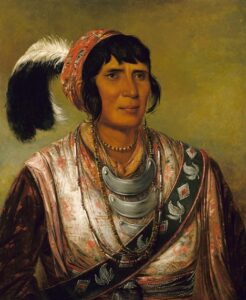 Florida’s Seminole Wars were about property rights. Osceola believed that the indigenous peoples of Florida had rights to the land they occupied. While Osceola was not a chief by birth, his followers recognized him as such because of his natural leadership abilities. He gathered other Seminoles in opposition against forced removal, during the Second Seminole War, 1835-1842. Osceola considered anyone, both whites and other natives who cooperated with whites as his enemy.
Florida’s Seminole Wars were about property rights. Osceola believed that the indigenous peoples of Florida had rights to the land they occupied. While Osceola was not a chief by birth, his followers recognized him as such because of his natural leadership abilities. He gathered other Seminoles in opposition against forced removal, during the Second Seminole War, 1835-1842. Osceola considered anyone, both whites and other natives who cooperated with whites as his enemy.
Osceola had attended several meetings with American officials. None addressed the issues. During one treaty meeting near St. Augustine, Florida, Osceola was knocked out, bound, and imprisoned. This was done while all under a flag of truce. Osceola was then imprisoned in the Castillo de Marcos in St. Augustine. Later, he was moved to Fort Moultrie, South Carolina. Osceola remained there until his death on January 30, 1838. He was buried on the grounds outside of Fort Moultrie without his head. It was removed by Dr. Frederick Weedon as a scientific curiosity.
The questions of honesty should never be gray. Yet, we have a story of the rights of indigenous people, their land, fair treatment during displacement, the word of our own American government’s promises under a flag of truth, and the inhuman treatment of Osceola. Florida’s early settlers would claim that it was justified to remove Osceola. Every resident of the State of Florida benefits from Osceola’s removal today, except the indigenous people. The question for future generations is how will you test the honesty of an action against God’s Truth? Do your rights ever supersede the rights of others?
Ideas to Explore
Plan a field trip to the Castillo de Marcos where Osceola was held prisoner. The Castillo de San Marcos is located on the shores of St. Augustine’s Matanzas Bay. It is a unique fortress that has served as a military post since 1672. Built from an indigenous and semi-rare stone composed of the shells of dead shellfish (called coquina), the Castillo stands today as the only 17th-century military structure in the United States.
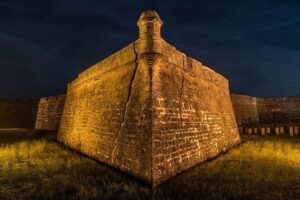 Pedro Menendez de Aviles of Spain, decided that the city and its port needed protection. Starting construction in 1672, workers retrieved the coquina stone for the walls from Anastasia Island, located just across the bay. The fort was completed after 23 years of construction in 1695. It has since gone through a series of improvements and renovations through the course of the varying countries that have occupied it, including raising the walls as well as additional walls surrounding the city.
Pedro Menendez de Aviles of Spain, decided that the city and its port needed protection. Starting construction in 1672, workers retrieved the coquina stone for the walls from Anastasia Island, located just across the bay. The fort was completed after 23 years of construction in 1695. It has since gone through a series of improvements and renovations through the course of the varying countries that have occupied it, including raising the walls as well as additional walls surrounding the city.
The Spanish kept St. Augustine in its power for quite some time. It was not until 1763 that the British gained the Florida Territory in a trade with Spain, and they were forced to relinquish it after the American Revolution. The name of the fort was changed for the first time to Fort St. Marks. The Spanish regained St. Augustine in 1784, reverting the fort back to its original name. However, after Florida became a US territory the name was changed to Fort Marion. At Fort Marion, old storerooms were converted to prison cells, and many Native Americans were held here as prisoners, including Osceola.
 Although it has been occupied by various cultures, specifically the Spanish, British, and the US, the Castillo has never been conquered in all the years of its operation. Many believe its soft and porous stone walls have contributed to this long-lasting fortress. Unlike other stones, coquina has a compressible nature, absorbing the blasts of projectile cannons rather than deflecting. Its star-shaped design, modeled after the ‘bastion system,’ a 15th-century Italian military design, the Castillo was built to withstand the changing technologies of New World warfare.
Although it has been occupied by various cultures, specifically the Spanish, British, and the US, the Castillo has never been conquered in all the years of its operation. Many believe its soft and porous stone walls have contributed to this long-lasting fortress. Unlike other stones, coquina has a compressible nature, absorbing the blasts of projectile cannons rather than deflecting. Its star-shaped design, modeled after the ‘bastion system,’ a 15th-century Italian military design, the Castillo was built to withstand the changing technologies of New World warfare.
The Castillo is operated by the US Government’s National Park Service. You can find information about this site here.
Practicing Acts of Honesty
There are numerous ways people can practice honesty. Here is a partial list. Your group should work to build its own list. One good idea would be to pick one item a week, make it the focus of both discussion and Bible Study. God has a lot to say about the topic of honesty.
- Think before you speak.
- Say what you mean and mean what you say.
- Do all you can to communicate in an open and honest fashion.
- Simplify, simplify, simplify so that everyone clearly understands your message.
- Do not embellish but describe things accurately.
- Present both sides of each issue fairly.
- If you have a bias or a conflict of interest, be open and admit it.
- Ask questions to make sure nothing you have said is misinterpreted.
- When someone tells you the truth and you don’t like it, thank them for their honesty.
- Accept responsibility, admit your mistakes.
- Hold people accountable when their words do not match their actions.
- Never compromise your integrity and reputation by associating yourself with people whose standards of integrity you question.
- 1NIV New International Version Translations


